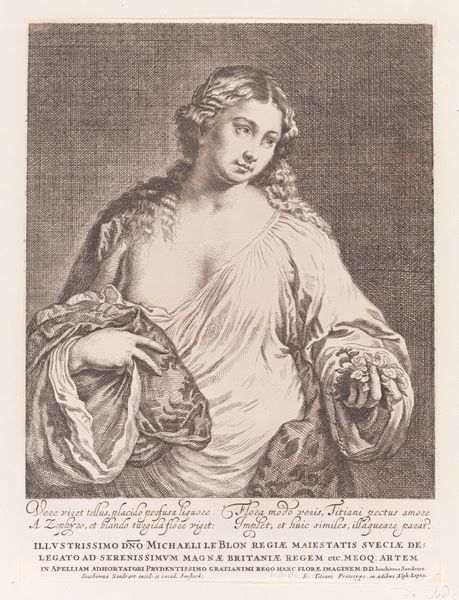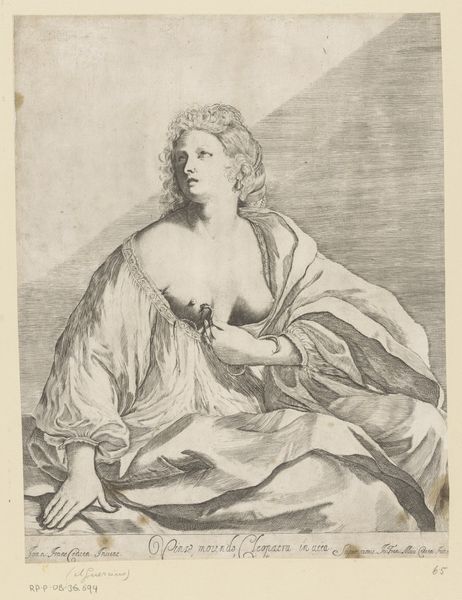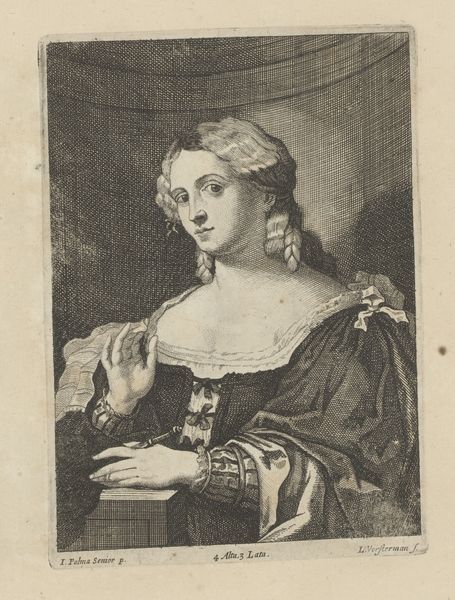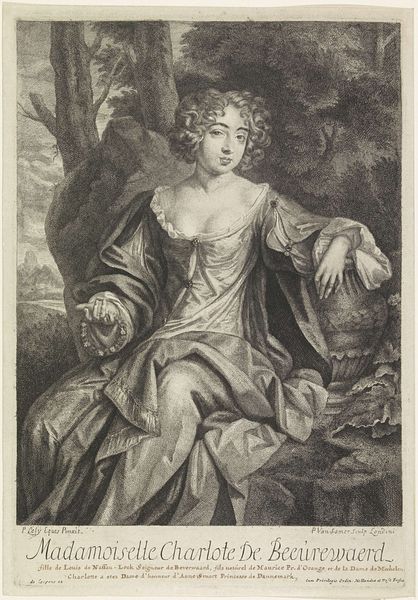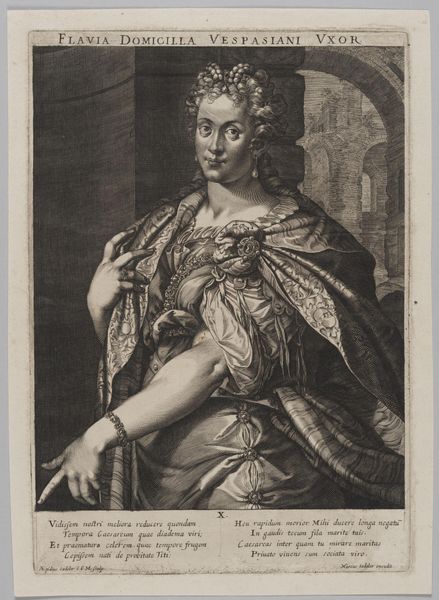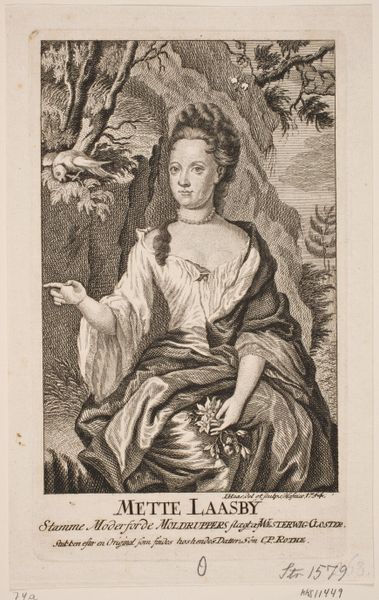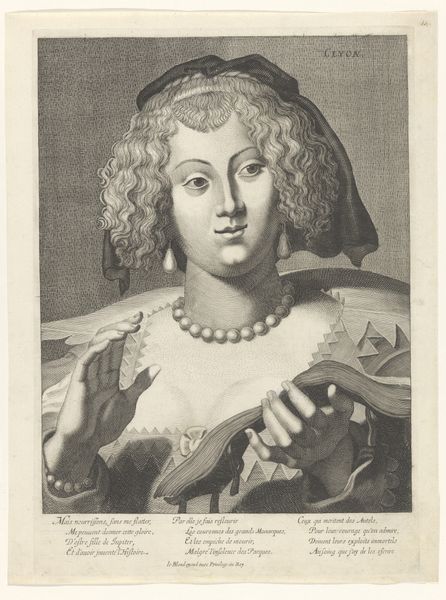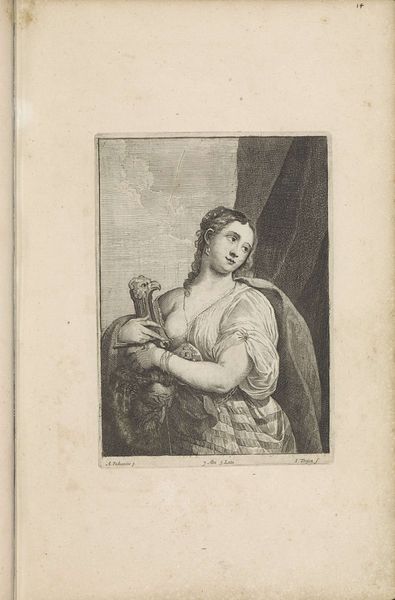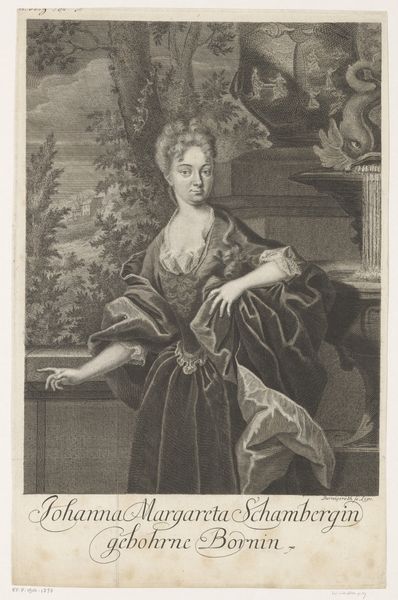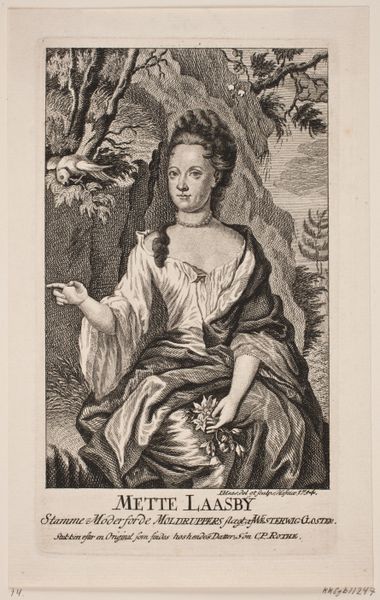
print, engraving
#
portrait
#
allegory
#
baroque
# print
#
old engraving style
#
pencil drawing
#
history-painting
#
academic-art
#
nude
#
engraving
Dimensions: height 237 mm, width 188 mm
Copyright: Rijks Museum: Open Domain
Editor: This is "Flora," an engraving by Giacomo Piccini made after 1627. There's a certain delicacy in the way he's captured the figure, a softness despite the stark medium. What are your immediate impressions of its composition and technique? Curator: Indeed, the textural variations achieved solely through line are quite remarkable. Consider how the density of hatching around the figure's contours defines form and creates the illusion of depth, contrasting with the more open, fluid lines describing the drapery. The poem in Latin is key to a formalist perspective on the artwork. Editor: It's interesting that you focus on the poem's language, I had initially looked right over that as just background text. Does the Latin language choice impact how the piece communicates as well? Curator: Certainly, we must recognize that Latin, in this historical context, signified an elevated discourse, associating the artwork with erudition and the classical tradition. Furthermore, the poem itself, which refers to Flora causing a blossom to "delight," positions Flora at the core of beauty itself, but we arrive at this understanding only via a formal recognition of its integration into the whole work. Does that shift your reading of the piece at all? Editor: It really does. I now see the Latin inscription less as an added detail, and more as fundamental to understanding Piccini's construction of beauty and form within the work. Thanks! Curator: You're welcome! This close attention to textual and formal interplay unveils how the artwork creates its own meaning through internal relationships and the language in the poem.
Comments
No comments
Be the first to comment and join the conversation on the ultimate creative platform.
